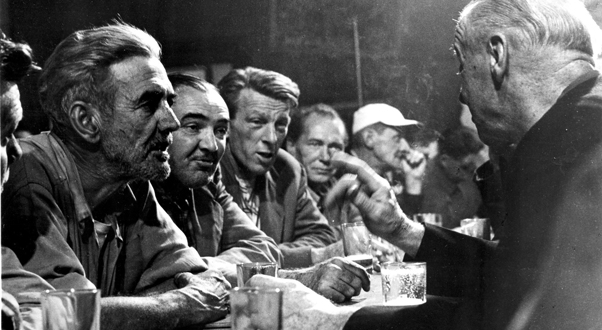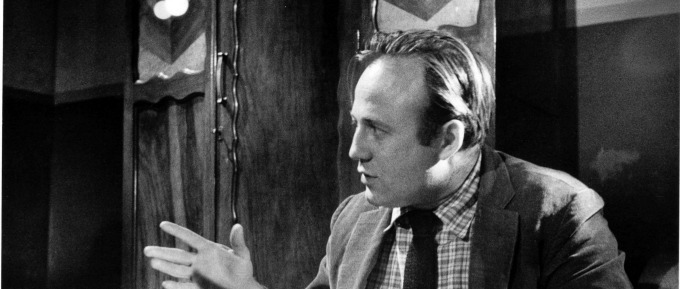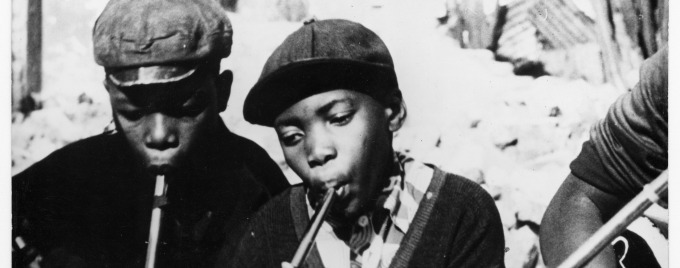James Walpole interviews James Mackay, organiser of the up-coming LIONEL ROGOSIN season at The Cambridge Film Festival, about the great man and process of arranging the season.
James Walpole: Could you outline a little of your own career, and of your relationship to Rogosin’s body of work?
James Mackay: After leaving art school in the 70’s I ran the cinema at the London Film-maker’s Co-op then going on to programme other venues and events before turning my hand to film production at the start of the eighties. My interest has always centred round independent film and artist’s moving image works. I began programming the microcinema strand in Cambridge in 2001 and try every year to bring something to the festival that is new and independent, or historical and deserving of a new audience. This year I’m showing SPARK, A BURNING MAN FILM and the work of Lionel Rogosin. As Rogosin’s work is central to the New American Cinema movement, and his setting up of the Bleecker Street Cinema inspired a whole generation of film-makers, I thought it would be best to party his work with the work of other relevant film-makers. Working with William Fowler of the National Film Archive, we were able to access newly restored films, some of which have rarely or never been seen in the UK before. I’m particularly pleased that we have been able to invite Lionel’s son, Michael, to the festival, where he will screen a series of documentaries that he has made about his father’s films. The short film programme that has been put together is particularly interesting with rarely seen films by Menken, Harrington and others.
“ON THE BOWERY is a film about the unseen casualties of war…”
JW: Just how influential do you regard Rogosin’s films as being to the intellectual and social discussions of the 50’s and 60’s?
JM: Rogosin was a giant of independent cinema, not only as a film-maker, but a facilitator of exhibition. Along with Jonas Mekas, who went on to found the New York Film-maker’s Co-op, he organised and promoted screenings of independent film at his own Bleecker Street Cinema. This venue was the very hub of discourse around film-making in the 50’s and 60’s, acknowledged by the likes of Martin Scorsese as a true film school.
JW: Expanding on this, could you tell us a little about the role Rogosin played in the New American Cinema movement, with The Bleecker Street Cinema, and also about how they played a role in shaping the time period?
JM: What is so interesting about that period is the wide variety of film-making that flourished in a mutually supportive environment. In 1960 Rogosin used his family money to open and operate The Bleeker Street Cinema, as a direct way of circumventing the problem of distribution and exhibition of independent film, ostensibly of his own film COME BACK, AFRICA which was having trouble gaining exposure, seen as highly controversial at the time. It quickly became one of the most influential “art” cinemas in New York, and served as an informal film-school for young film-makers such as Martin Scorsese, Miloš Forman and Francis Ford Coppola. Unlike other cinemas, Bleecker Street also screened work by more experimental film-makers such as Jonas & Adolphus Mekas, Shirley Clarke and Curtis Harrington.
JW: To what degree, would you say, Rogosin’s experiences during World War Two informed his work after the fighting ceased? And in your opinion, is his work still relevant and challenging, or is this segment of the festival better thought of as an important exhibition of film history?
JM: I personally feel that ON THE BOWERY is a film about the unseen casualties of war. Returning home after the war, many of the men must have been traumatised and damaged by what they experienced. The itinerant life-style adopted by them, the uncontrolled drinking, are a symptom of their experience. Rogosin was very influenced by Flaherty, and his mixture of documentary observation and staged drama follows on from Flaherty’s work. Although the events in the film are staged, the protagonists are very much speaking as themselves. The work still feels very fresh and has an edge which is missing in much contemporary docudrama. The tendency now is to overdress the reality. With Rogosin, the narrative staging never eclipses the observation.
It is important to exhibit film history as there is always a younger generation coming up, who will not have had the opportunity to see seminal work from the past. I believe that increasingly the role of film festival is to re-discover work and keep it alive for audiences.
JW: How do you think that cinema’s discussion of race has evolved since Come Back, Africa? Are there traces of Rogosin to be found, both in independent film and in Hollywood today?
JM: Big question, probably one that can start to be answered by the response of the audience to seeing this group of films. I would say that it would merit a special event. William Fowler and I hope to continue developing this programme and bring in elements of more organised discussion.
James Mackay’s new book “Derek Jarman Super 8” will be published by Thames & Hudson in October. The LIONEL ROGOSIN season begins Thursday, 4th September, and continues to the end of the festival.



